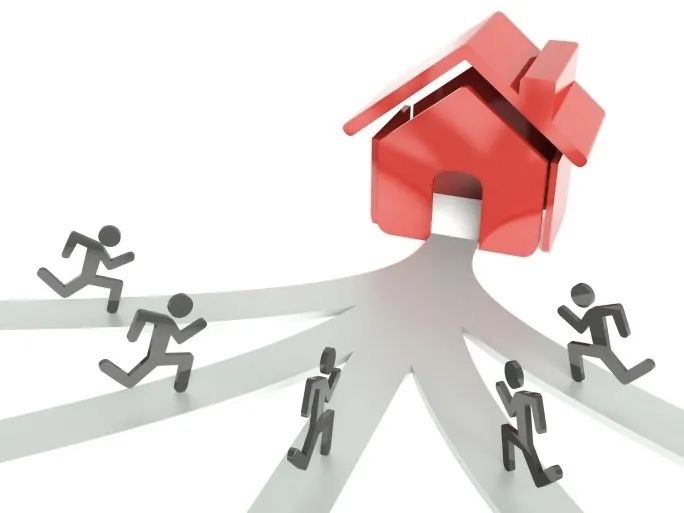Austin’s housing inventory remained stuck at a persistently low level at the start of 2022, while home prices broke records for the month of January, according to new data from the Austin Board of Realtors.
On par with last January, the Austin metro had only 0.4 months of inventory on the market — a small fraction of a healthy market’s six months. Closed sales were down about 6% year over year, which experts attribute to the persistent lack of supply.
Keller Williams agent Jordan Moorhead, head of The Moorhead Team, said he was surprised to see inventory so low at the start of 2022.
“In October, it looked like things were going up,” Moorhead said. “We were thinking, ‘Oh, we’re coming out of this. It’s still going to be crazy, but it’s not going to be June [2021] crazy.’ And then it just took a total 180. So you’re just asking yourself, where are we going to be by June this year?”
Moorhead said he’s still encouraging clients to buy, particularly if they’re willing to buy something off the beaten path that might require a bit of work. He said individual buyers are competitive for these properties, as investor buyers and house-flippers are often constrained in their bids in an effort to keep profit margins wide.
“In real estate, time is your friend,” Moorhead said. “If you can hold on to something for at least a year, or two, or three, you could pay a lot more than a flipper can for it. And in the end, you can make as much or more money and still have a nice place to live.”
New listings aren’t exactly flooding the market in Central Texas. Compared to January 2021, they were down 10%, with only 2,614 new listings metro-wide last month.
A year-over-year decrease in either listing or sales activity was a common thread across the five-county area. Travis County saw about a 12% dip in closed sales and about a 15% dip in new listings. Bastrop sales were down about 13%, and new listings were down by less than 1%. Caldwell County saw the largest percentage decrease in closed sales, down 33% to just 20 home sales. New listings in the county were up significantly, though, with 59 homes on the market.
In Williamson County, home sales actually rose slightly, about 5%, while new listings were down about 12%. Hays County remained fairly steady, with a nominal increase in closed sales of about 1%, with a similar-sized decline in new listings.
The housing dearth is the result of several compounding factors, including supply chain backlogs making it harder for builders to get houses off the ground. At the same time, buyers are having to look farther out to find new homes actually being built.
“These homes are being built further and further away from our core downtown. People are having to look at a much longer commute, in order to get to their jobs. We’ve really got to start putting pressure on our elected officials to fix the development process down at the city,” said 2022 ABOR President Cord Shiflet. “It’s just been gridlock down at the city. And we can’t get these approvals out fast enough.”
Some developers and builders put the onus on the city of Austin to update its outdated land development code. In recent months, Austin City Council has taken a piecemeal approach — incrementally making things like granny flats easier to build — which has drawn a mixed response from developers and builders.
“Ten years ago, Austin acknowledged that the land development code was inadequate to meet our growing housing needs. Today, we still have the same issues, and it takes longer than ever to navigate the permit process. We need a new code that allows more housing to be built, and we need the city to make the changes necessary to deliver permits in a reasonable time. Until then, home prices will continue to increase like they have for the past decade,” Scott Turner, president of the Home Builders Association of Greater Austin, said in a statement.
Shiflet added that the lack of inventory doesn’t just affect the median single-family home, but rather all sorts of housing types at all price points.
“This problem affects all price ranges, all buying categories. If it’s homes, if it’s condos, if it’s apartments that are being leased — we need more room to build and a better process to build,” he said. “Without that new available inventory, existing prices are just going through the roof. It’s always been our goal that anybody who needs a home can have a home, no matter what price range they are in, no matter if they’re buying or if they’re renting.”
One effect of this paucity of housing is the shocking sticker price on the median home in the Austin metro, which reached $476,000 in January, up 30% from the same time last year. Within Austin’s city limits, the median sales price was $550,000.

Prices vary across the metro, although they’re rising everywhere. In Bastrop, prices were up 50% year over year, at $398,000. Caldwell County experienced a 31% rise to a median price of $315,000. Hays County’s 30% annual increase brought its median price up to $389,000. Travis County’s relatively small 24% jump brought it to a relatively high $530,000 median price. Williamson County was up 42% with a median of $460,000 in January.
The Article is from Austin Business Journal, copyright belongs to owner



